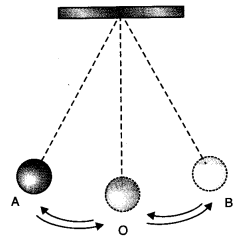CBSE Class 7 Science – MCQ and Online Tests – Unit 13 – Motion and Time
Every year CBSE students attend Annual Assessment exams for 6,7,8,9,11th standards. These exams are very competitive to all the students. So our website provides online tests for all the 6,7,8,9,11th standards’ subjects. These tests are also very effective and useful for those who preparing for any competitive exams like Olympiad etc. It can boost their preparation level and confidence level by attempting these chapter wise online tests.
These online tests are based on latest CBSE syllabus. While attempting these, our students can identify their weak lessons and continuously practice those lessons for attaining high marks. It also helps to revise the NCERT textbooks thoroughly
CBSE Class 7 Science – MCQ and Online Tests – Unit 13 – Motion and Time
Choose the correct answer:
Question 1.
Time period of a simple pendulum depends upon its
(a) weight of bob
(b) length
(c) both (a) and (b)
(d) None of these
Answer
Answer: (b) length
Question 2.
The correct symbol to represent the speed of an object is:
(a) 5 m/s
(b) 5 mp
(c) 5 m/s-1
(d) 5 s/m
Answer
Answer: (d) 5 s/m
Question 3.
If we denote speed by S, distance by D and time by T, the relationship between these quantities is
(a) S = D T
(b) T = \(\frac{S}{D}\)
(c) S = \(\frac{1}{T}\) × D
(d) S = \(\frac{T}{D}\)
Answer
Answer: (c) S = \(\frac{1}{T}\) × D
Question 4.
Observe the figure given below:
The time period of a simple pendulum is the time taken by it to travel from
(a) A to B and back to A
(b) O to A, A to B and B to A
(c) B to A, A to B and B to O
(d) A to B
Answer
Answer: (a) A to B and back to A
Question 5.
Nearly all the clocks make use of
(a) straight line motion
(b) periodic motion
(c) random motion
(d) circular motion
Answer
Answer: (b) periodic motion
Question 6.
A simple pendulum takes 42 sec. to complete 20 oscillations. What is its time period?
(a) 2.1 s
(b) 4.2 s
(c) 21 s
(d) 8.40 s
Answer
Answer: (a) 2.1 s
Question 7.
Boojho walks to his school which is at a distance of 3 km from his home in 30 minutes. On reaching he finds that the school is closed and comes back by a bicycle with his friend and reaches home in 20 minutes. His average speed in km/h is
(a) 8.3
(b) 7.2
(c) 5
(d) 3.6
Answer
Answer: (b) 7.2
Question 8.
A bus travels 54 km in 90 minutes. The speed of the bus is
(a) 0.6 m/s
(b) 10 m/s
(c) 5.4 m/s
(d) 3.6 m/s
Answer
Answer: (b) 10 m/s
Question 9.
On which axis is dependent variable represented?
(a) x-axis
(b) y-axis
(c) On any axis
(d) Depends on the data
Answer
Answer: (b) y-axis
Question 10.
Which of the following cannot be used for measurement of time?
(a) A leaking tap
(b) Simple pendulum
(c) Shadow of an object during the day
(d) Blinking of eyes
Answer
Answer: (d) Blinking of eyes














0 Comments:
Post a Comment